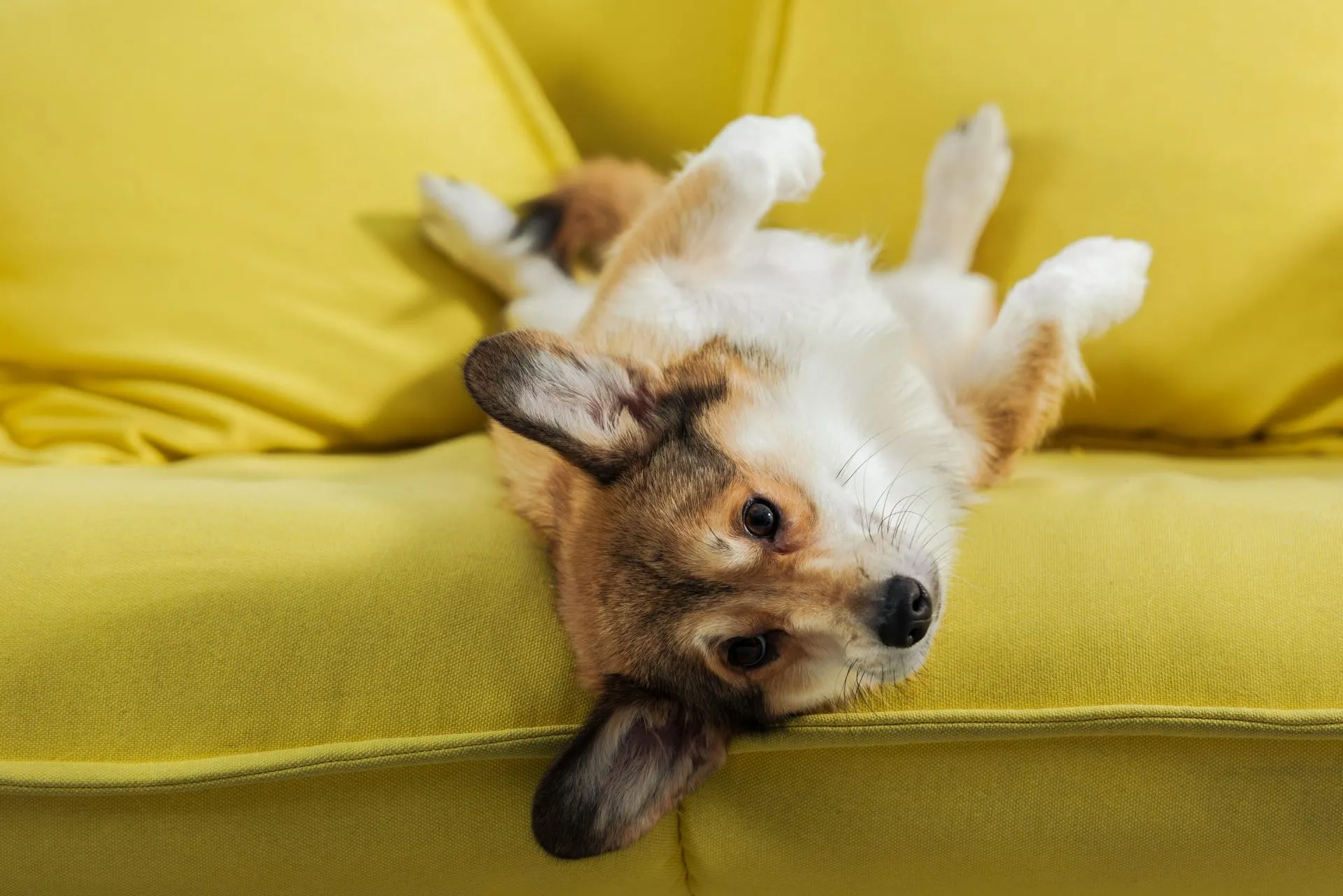Many dog owners cherish the companionship of their furry friends, and for some, this includes sharing the comfort of the sofa. However, allowing your puppy onto the furniture can lead to unwanted behaviours, especially if it’s not an “invitation only” affair. This guide will address the common challenge of How To Stop Your Puppy Jumping On The Sofa, transforming your living space into a harmonious environment for both you and your canine companion.
It’s a common scenario: you love your dog and want them to feel at home, but their enthusiasm for furniture access can become a nuisance, particularly when you have guests or when they’re muddy after a walk. S.D. from Cornwall faced precisely this issue, having let their two chocolate Labradors on the sofa, only to find the comfy dog bed on the floor was no longer appealing. This isn’t about correcting severe behavioural problems, but rather a subtler, yet crucial aspect of establishing boundaries and clear communication with your puppy. Understanding the principles of positive reinforcement and consistent training is key. For further guidance on establishing good behaviour, you might find it helpful to explore training your puppy not to jump up.
Establishing a Designated Space for Your Dog
The foundation of teaching your puppy to avoid the sofa lies in providing an appealing and rewarding alternative. Ensure your dog has a comfortable bed in each room they are permitted to be in. When you enter a room, like the lounge, call your puppy and direct them to their bed, using a clear command such as “in” along with a hand signal. To reinforce this, you can use the command “leave” if they attempt to stray from their designated spot, coupled with a gesture towards their bed.
Revisit Basic Training if Commands Aren’t Followed
If your puppy isn’t responding to these commands, it indicates that they haven’t fully grasped the instructions. This is the perfect opportunity to reinforce their foundational training. A common method involves owners holding their dog’s bed, asking them to sit, and then placing the bed in the desired area. Once the dog is called to their bed, and if there are multiple dogs, calling each one individually, reward them with a treat for complying. This establishes their bed as a positive and rewarding place, regardless of its location. This technique is also invaluable when travelling, as demonstrated by using a shower mat as a temporary dog bed in a hotel. Creating a safe and designated space for your dog, especially when away from home, is vital for their comfort and security.
 A happy puppy sitting by its bed
A happy puppy sitting by its bed
The Pitfalls of Inconsistent Allowances
Continuously allowing your puppy to jump on the sofa, even inconsistently, will make the training process significantly harder. They will begin to expect access, rather than understanding it’s a privilege. This inconsistency can also extend to other areas of their behaviour. For instance, if a puppy is allowed to jump on the sofa without restraint, they may exhibit similar behaviours with guests or in other situations where a clear boundary is needed. Establishing clear expectations is crucial for building a respectful relationship.
The Power of Consistent Practice
If you’ve previously permitted your puppy on the sofa and now wish to change this rule, consistent practice is paramount. Behavior modification requires regular reinforcement of new routines. Ideally, while your puppy is on the sofa, you would point to their bed and issue a command like “Bertie, in!” If Bertie hesitates, it’s essential to ensure they understand that their bed is a positive destination where they will receive a reward. This reinforces the idea that following commands leads to good outcomes.
 A puppy looking expectantly at its owner
A puppy looking expectantly at its owner
Managing Excitement Levels for Effective Training
If your puppy is overly excitable, exhibiting behaviours like jumping on and off their bed or running around erratically, it’s a clear sign they are not yet ready for this stage of training, particularly in a stimulating environment with other people or distractions. The most effective approach is to return to using their bed as the focus. Place a food reward on the floor next to their bed, encouraging them to sit and focus on it. You can then periodically walk past, lean down, and reward them for remaining calm. This helps them understand that by staying in their designated spot, they will earn positive reinforcement. As they become more accustomed to this, they will happily settle in their bed for extended periods, anticipating rewards such as praise, an ear scratch, or a treat. For more comprehensive guidance on positive reinforcement techniques, consider exploring how to train your puppy not to jump up.
If your puppy’s energetic nature also extends to other activities, learning how to train a puppy to run with you can help channel that energy productively. Similarly, if your concern is specifically about preventing jumps on visitors, resources on how can I keep my dog from jumping on people will be beneficial. For more complex behavioral issues like aggression towards other dogs, specialized guidance such as how to train an aggressive dog with other dogs is essential.
References
- Ben Randall’s dog training methods and services are detailed on www.ledburylodgekennels.co.uk.
- For a free seven-day trial of the Gundog app, visit www.gundog.app/trial.
